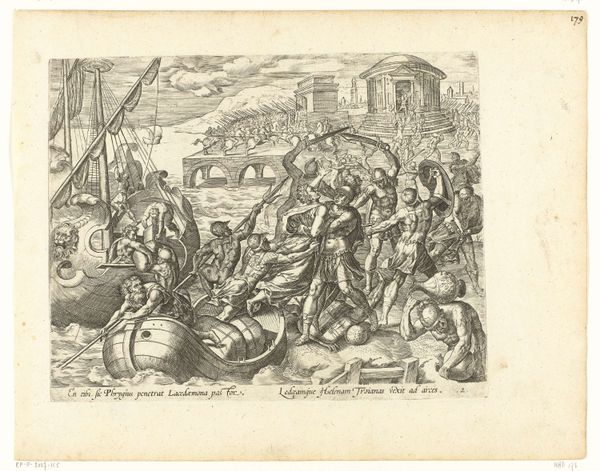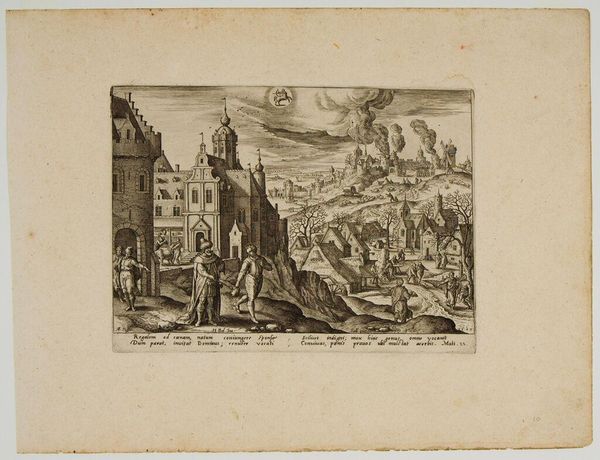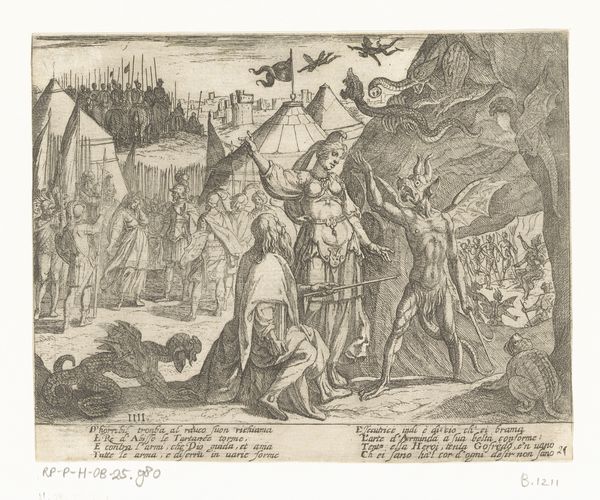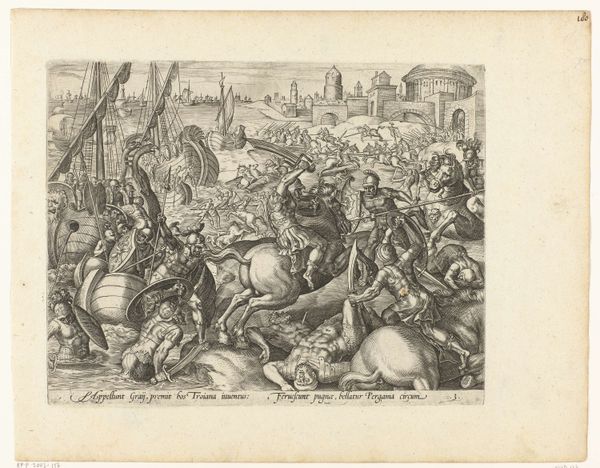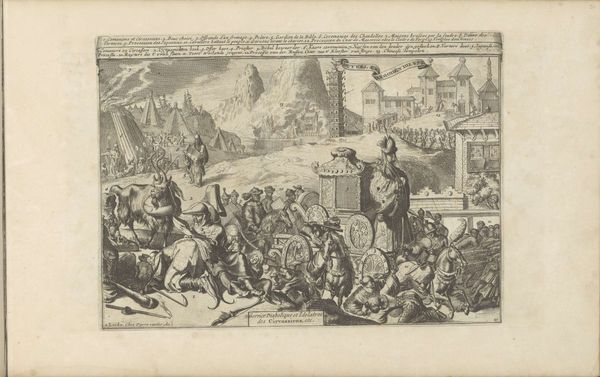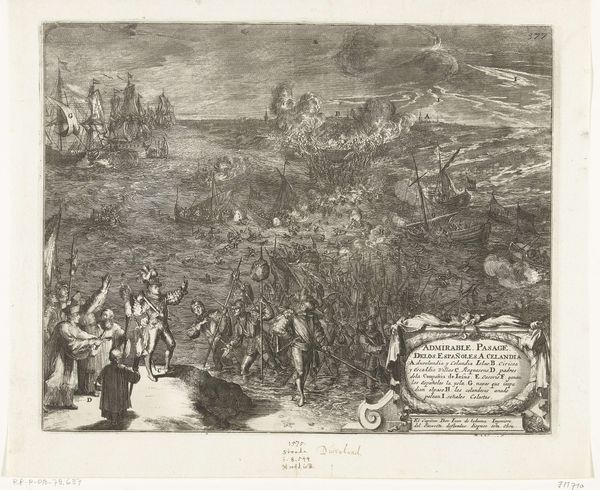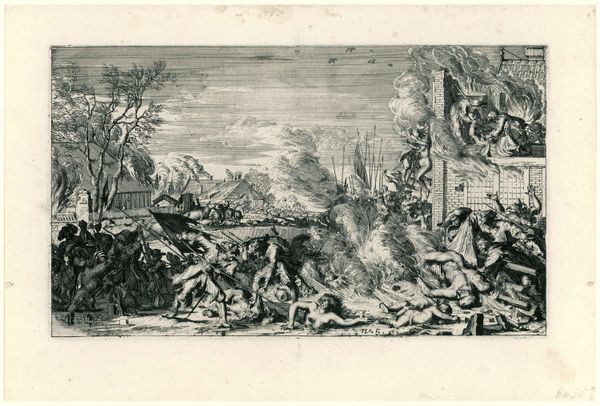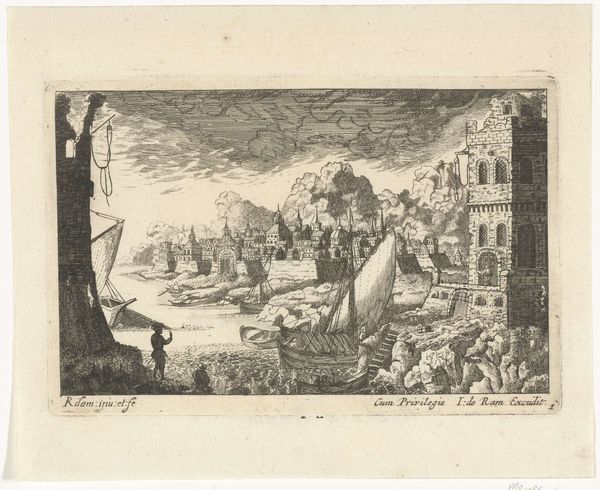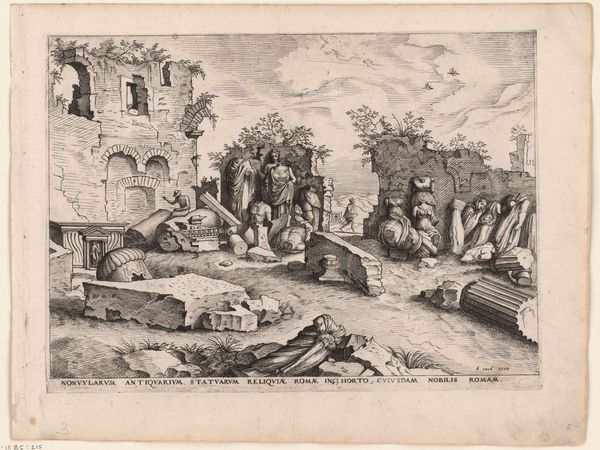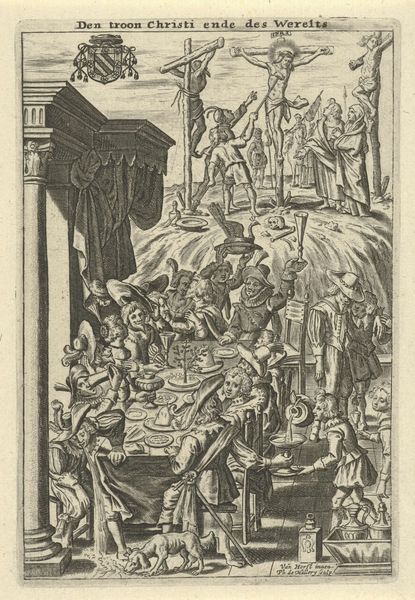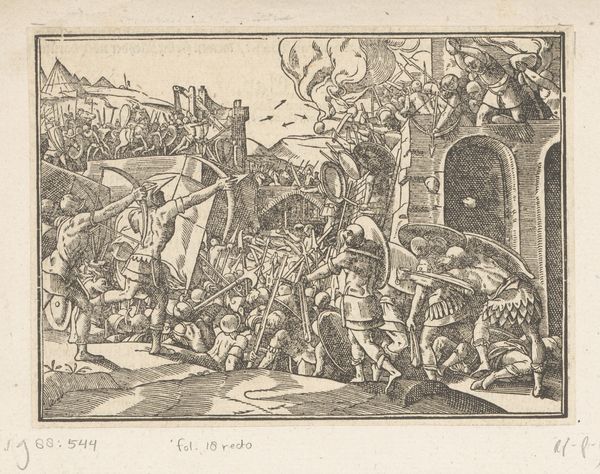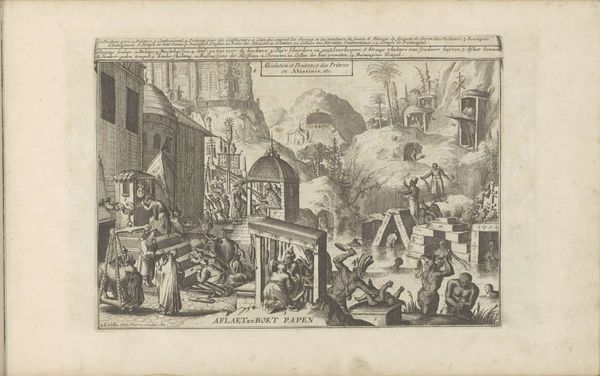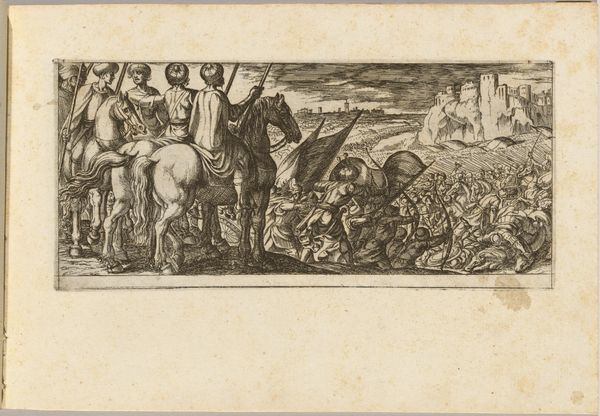
drawing, print, intaglio, engraving
#
drawing
#
narrative-art
#
pen drawing
#
mechanical pen drawing
# print
#
pen illustration
#
pen sketch
#
intaglio
#
old engraving style
#
classical-realism
#
figuration
#
personal sketchbook
#
pen-ink sketch
#
pen work
#
sketchbook drawing
#
history-painting
#
sketchbook art
#
engraving
Dimensions: height 201 mm, width 256 mm
Copyright: Rijks Museum: Open Domain
Curator: Here at the Rijksmuseum, we have a print entitled *Paard van Troje*, or Trojan Horse, made before 1571 by Pieter Jalhea Furnius. It depicts the iconic scene from the Trojan War. Editor: My first impression is one of dynamic tension. The looming horse contrasted with the bustling crowd really gives a sense of impending doom and chaotic energy, doesn’t it? Curator: Absolutely. Furnius uses the Trojan Horse not just as a literal depiction, but as a symbol of deception. Think about what the horse represents here—the ultimate act of cunning, where appearance belies a deadly interior. Its presence here signifies the fall of a civilization based on misplaced trust. Editor: And you see that very directly reflected in the process of creating this print. Look at the density of the linework, creating dark shadows. That’s intaglio, and it’s key. Each one of those lines had to be etched physically to build that intensity and give us that powerful contrast and foreboding. What tools would have even been available for that detail? It shows mastery over those materials. Curator: Precisely, it’s about visual persuasion. The act of bringing this horse within the city walls suggests a dangerous crossing of boundaries. In that period, prints served as accessible storytelling devices, which is really on display here. The engraving is almost stage-like, complete with various players and even scenery. Editor: This image circulates an interpretation that impacts culture as well as illustrates history. And beyond the art historical narratives, the very production of this image speaks to a burgeoning market. A mass producible intaglio gives an affordable way to disseminate a culturally charged story and, thereby, participate in a larger system of exchange that links knowledge to economic agency. Curator: Indeed. When we view *Paard van Troje*, we are not just looking at a historical moment. We are viewing a network of encoded symbols woven by mythology and beautifully realized through the skilled manipulation of medium and meaning. Editor: Looking closely reveals layers. It reminds us that artworks carry complex messages reflecting the moment in which they’re produced.
Comments
No comments
Be the first to comment and join the conversation on the ultimate creative platform.
